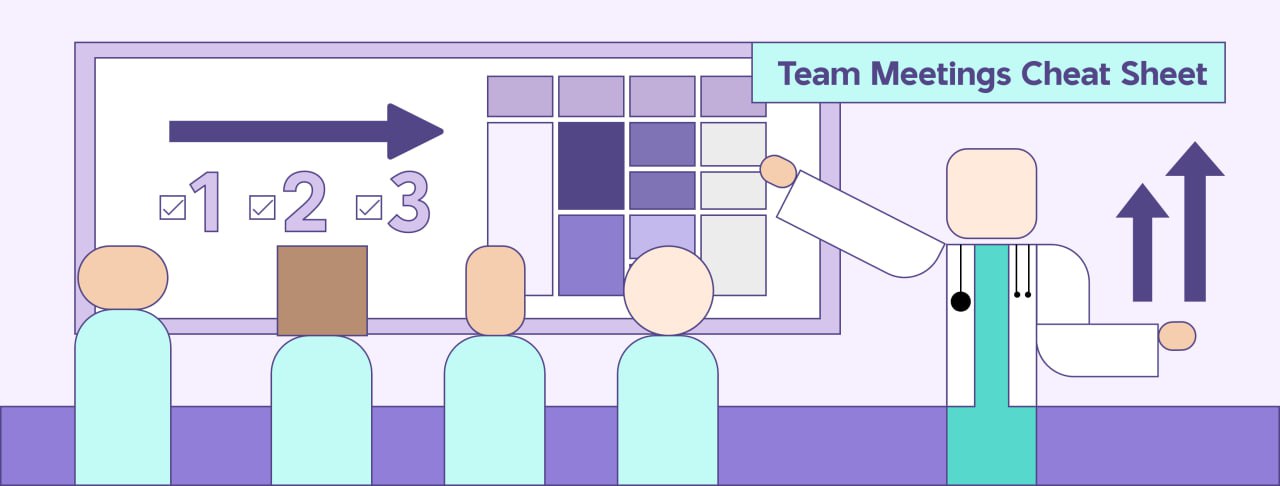Maximising Value in Healthcare Team Meetings: A Practical Cheat Sheet
Author: Lawrence Reyes, MBA, MRSO, PGC-MRI I 8 September 2024
In our ongoing exploration of enhancing operational efficiency within the healthcare sector, our previous article illuminated critical strategies for maximising the value of team meetings across various departments. Given its pivotal role in patient diagnosis and treatment, a particularly crucial area is the radiology department. It's here where precision, accuracy, and most importantly, swift communication can significantly impact patient outcomes. Building upon our initial insights, we now focus on a detailed, actionable guide tailored expressly for radiology professionals. This specialised cheat sheet aims to crystallise the essentials of structuring effective weekly team meetings, ensuring they are more than just informational exchanges but pivotal strategy sessions that drive departmental excellence and patient care.
1. Pre-Meeting Preparation
Clearly define the goals for the meeting. This could range from addressing patient scheduling challenges to discussing new imaging protocols or safety procedures.
Use a collaborative platform (e.g., Google Docs, Trello) to draft meeting agendas.
Include time allocations for each item to keep the meeting concise.
Distribute a focused agenda at least 24 hours in advance. Include topic headers like "Radiation Safety Updates," "Equipment Maintenance," or "Case Review."
Consider the best time to conduct the meeting to ensure maximum attendance.
Choose an appropriate meeting format (face-to-face, virtual, hybrid) based on team preferences and requirements.
Encourage Early Engagement:
Ask team members to contribute agenda items or questions they have in advance.
Please encourage them to think about solutions to challenges that will be discussed.
Share relevant patient case studies, equipment manual updates, or protocol changes ahead of time to allow team members to prepare for in-depth discussion.
2. During the Meeting
Begin the meeting on time to set a precedent for efficiency and respect for everyone's schedule.
Start with quick wins or positive feedback to set an encouraging tone.
Rotate through sections of radiologists, technicians, and support staff for updates, ensuring all key areas such as MRI, CT, Ultrasound, and X-ray are covered.
Stick to the predetermined agenda and time allocations to respect everyone's time.
Assign a timekeeper if necessary.
Use round-robin or other inclusive techniques to ensure everyone contributes.
Facilitate an open discussion environment where all ideas are welcome to address cross-functional issues, like patient not arriving, poor patient preparation, portering issues, and IT system performance, that impact radiology operations.
Utilise digital tools for real-time polling or feedback, if applicable
Incorporate a brief case study review where multidisciplinary insight can lead to improved service delivery or better patient experience.
Clearly define action items, assigning responsible persons and deadlines.
Conclude each topic with clear action items, assigning responsibilities and deadlines for follow-up.
Reserve the last 5 minutes for participants to provide immediate feedback on the meeting's effectiveness and engagement.
3. Post-Meeting Follow-Up
Distribute minutes within 24 hours, highlighting decisions made, action items assigned, and any educational points discussed.
Implement a shared digital tracker to monitor progress on action items. The tracker should have columns for task description, responsible person, deadline, and status updates.
Utilise project management software like project plan in Google sheets to track progress on action items.
Encourage team members to update their progress asynchronously.
Invite feedback on the meeting's effectiveness through a quick, anonymous survey or suggestion box to continuously refine the meeting process.
Keep an open line of communication for ongoing suggestions and ideas. Act on the feedback collected to refine the meeting structure or content.
Here is a sample structured cheat sheet written in spreadsheet form specifically for the radiology department:
Meeting Agenda
Structure your agenda with clear objectives to ensure meetings are focused and productive.
Action Items Tracker
Keep track of tasks, responsibilities, and deadlines to ensure follow-through.
Meeting Minutes
Document discussions, decisions, and action items to track progress and accountability over time.
Additional Notes for Effective Use:
Regular Updates: Ensure that the document is updated in real time during the meeting to capture decisions and actions accurately.
Review and Follow-up: Begin each meeting by reviewing the action items from the previous meeting to encourage accountability and track progress.
Archiving: Regularly archive old agendas and meeting minutes to keep the document manageable and focused on current and future needs.
This structured approach allows radiology managers to conduct efficient, effective meetings focused on actionable outcomes, fostering a culture of continuous improvement and open communication within the team.
About the Author
Lawrence Reyes is a seasoned MRI radiographer and a certified Magnetic Resonance Safety Officer with a rich background in healthcare management. With decades of experience, he has led transformations in MRI services and developed comprehensive training programs in the UK and Singapore. Lawrence is passionate about improving MRI safety protocols and patient care through education and innovative management strategies. As a leader and educator, he continues to share his expertise widely. For more about Lawrence and his work, connect with him on
LinkedIn.
